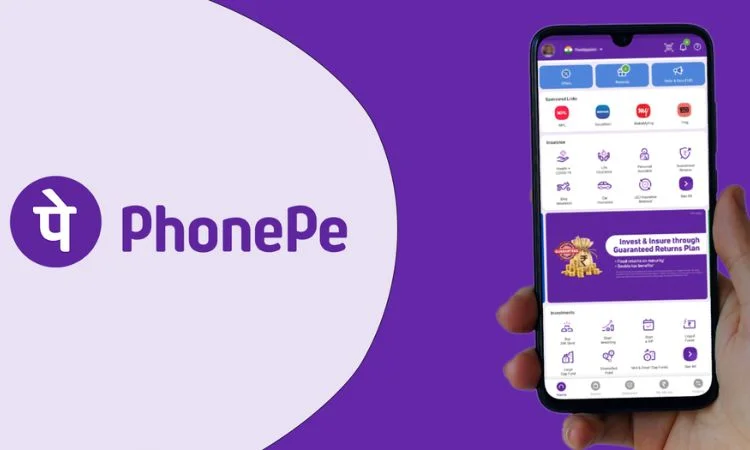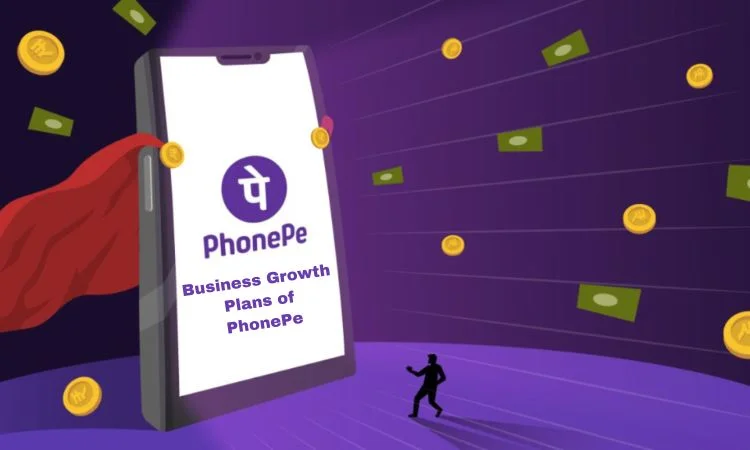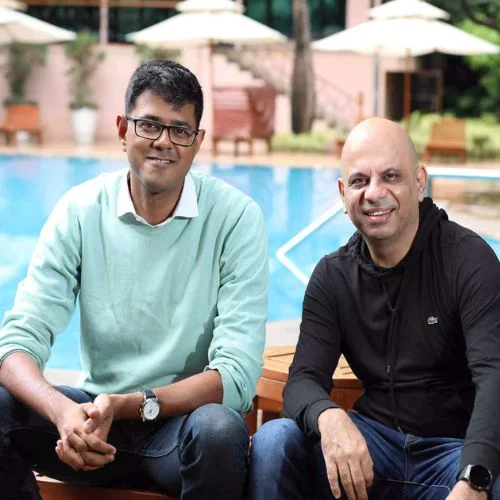As more and more scripts around the undiscovered world unroll in the Fintech industry, perhaps, none is as thrilling and as meaningful as Sameer Nigam’s journey behind PhonePe. Phonepe was launched in the year 2015 and it has emerged as the market leader in digital payment systems in India today.

Source: Google Images
The Early Years: Laying a Basics of a Structure
The journey of Sameer Nigam towards becoming an entrepreneur can be considered right from before PhonePe. Nigam was born and brought up in India where he achieved his education that prepared him for his future activities. He did his initial schooling at DPS Noida and further completed his B. E in Computer Engineering from Mumbai University. Understandably anticipating the need for a world oriented sense, Nigam pursued a Master of Science in Computer Engineering in the United States at the University of Arizona.
But Nigam did not just stop there. However, knowing that sheer technology will not be sufficient to transform an entire industry he enrolled for MBA in Entrepreneurship from The Wharton School at the University of Pennsylvania. This diverse educational background gave Nigam a combination of technical knowledge and experience in business management which would be essential in the future business endeavours.
The Professional Journey: From Shopzilla to Flipkart

Source: Google Images
A common thing you will find when beating around the bush on google is that shopzilla is no longer an active website while flipkart has lately been catapulted to the position of one of India’s biggest online shopping sites.
Nigam initially worked at Shopzilla as the Director of Search Product Development between the years 2001 and 2007. The above experience in the e-commerce sector helped him gain perspectives on the online behaviours of consumers and the nature of digital products.
Further, in the year 2009, Nigam ventured into entrepreneurship by starting his own company Mime360 which is an unique web based social media promotion. However, the platform’s success caught the eye of the e-commerce goliath, Flipkart, which soon proceeded to acquire Mime360. This merger was a significant change in Nigam’s career as he got a chance to work at Flipkart and climb up the ladder rather swiftly.
Nigam has worked at Flipkart during the period from 2011 to 2015, assuming such executive positions as Vice President and Senior Vice President. He rose to become a marketing and engineering executive where he continued to build on his strengths in management, Internet marketing, and product design/development. Working at one of the most successful startups of India, Nigam got the opportunity to witness first-hand how the country is going digital and how there is a demand for new solutions in the sphere of money transfer.
The Origin of PhonePe

Source: Google Images
Agreeing with Nigam’s observation that India’s economy is fast going digital, there was a glaring market niche. The previous procedures and banking and instalment arrangements were reasonably cumbersome, not to mention the time required to complete tasks in a country as broad as India. It was watching the PayPal, Venmo, and Alipay revolution in the global market that made Nigam realise that such a service could redefine financial services in India.
Nigam got another opportunity in 2015 to take a risky decision of moving away from the comfortable chair that he was enjoying at Flipkart. Starting with his partner Rahul Chari, Nigam has initiated PhonePe in December of the year 2015. Fortunately, it occurred at the right time when the Indian government was encouraging ‘Digital India’ and digital transactions and payments.
Building PhonePe: Opportunities and Risks
The initial days of PhonePe were slightly volatile also with some problems and issues. They knew that they were entering the so called” opportunity ridden” market that already has the prominent players, hence the need for differentiation and an attractive product was felt more acutely. For his purpose of completing his vision, Nigam with his team ensures building a platform that will seem rather easy to use to the Indian consumer.
This reporter can attest to the fact that PhonePe introduced one of the simplest UPI frameworks early enough. With the help of this government initiated system, PhonePe was to control the P2P money transfer facility, which was the platform on which the company started to grow dramatically.
But getting there was not an easy sail as people might think. Nigam and his team faced numerous hurdles, including: Nigam and his team faced numerous hurdles,
including:
1. Regulatory Challenges: Legal policies concerning monetary matters of India were complicated and, therefore, planning and implementation processes had to be streamlined.
2. Funding: One of the main obstacles was to obtain the first money to finance growth and development.
3. User Adoption: In order to change the payment habits of the targeted population and shift them from a more ‘traditional,’ physical means of payment to a new digital platform, such a solution involved a significant amount of work in the categories of user education and marketing.
4. Technical Infrastructure: It was also crucial to create a sound base for transactions that could become millions-scaled at one moment and could not be solved without professional IT skills.
However, still following the brief leadership and vision of Nigam, the PhonePe team continued to work towards the desired goal to change the payment system in India.
Expanding the PhonePe Ecosystem
Thus, as PhonePe strategically won the P2P payment space, it was imperative for Nigam to think about how the firm could provide related services.
Under his guidance, PhonePe rapidly expanded its services to include:
1. Utility Bill Payments: Facilitating its users to pay most of the bills including electricity, water and gas bills through the mobile application.
2. Mobile Recharges: Being the available means to conveniently add more credit on both prepaid call cards and mobile connection.
3. Merchant Payments: Signing up a plethora of Shopkeepers, retailers and all the way up to large chain stores, who accept PhonePe as a means of payment.
4. Investment Options: Extending basic functionalities of the app to allow users to buy Mutual Funds solving the problem of stock market funds accessibility.
5. Insurance: Assuming an insurance distribution model focusing on the collaboration with insurance companies to offer multiple kinds of insurance products in the PhonePe environment.
The following expansion strategy changed the app from a mere payment app to a financial application where users can find all kinds of needs.
Sameer Nigam’s Leadership Style

Source: Google Images
Therefore, the PhonePe success story can be attributed to Sameer Nigam’s leadership. People in his office and various experts have mentioned that he is a professionally-oriented person who achieves success by emphasizing users’ values most of all. This emphasis on the identification and fulfilment of the customers’ needs has been instrumental in transforming PhonePe into a premier mobile financial services application.
Regarding its organizational culture, one can note that innovation is encouraged throughout the company under the leadership of Nigam. He insists on his subordinates to question decisions that are not striking at the roots of the problem, to adopt innovative tactics and techniques, as well as to continuously look for the ways to enhance their offerings. This dedication to change is consistent with Nigam’s strategic plan for PhonePe, emphasizing monumental change over small profit.
Furthermore, there is flexibility and quick decisions as a characteristic of Nigam’s leadership style. Due to the fact it operates in the field of fintech where change occurs rapidly, PhonePe has been able to adapt to the changes in the market to continue growing in the right direction.
Thus, under Nigam’s management, PhonePe became one of the driving forces helping India to progress in the establishment of the digital economy.
Some key impacts include:
1. Financial Inclusion: This way, PhonePe through availing mobile digital money solutions to consumers, has enabled Millions of new India’s previously excluded from the Financial mainstream.
2. Digital Literacy: From this, it has wedged an understanding of how to use the digital space within different categories of users, such as the rural and semi-urban areas.
3. Small Business Empowerment: PhonePe has been successful in extending its services to small merchants and retailers thus helping them gain a large number of customers and reduce their costs of operations.
4. Reducing Cash Dependency: PhonePe has become very popular among people of India hence dealing in cash has been made to be minimal hence enhancing the economy.
Recognition and Awards
Not surprisingly, Sameer Nigam offers many valuable inputs regarding the fintech field. He is a recipient of the ‘40 under 40’ award instituted by The Economic Times for prominence in shaping India Inc. ’s digital architecture in 2018.
PhonePe, under Nigam’s leadership, has also received numerous awards and accolades, including:
– Award from NPCI, being the first acquiring bank in terms of the number of merchants on the UPI Network (2018)
– Mobile Payment Product/ Service of the Year at the IAMAI India Digital Awards for 2018 and 2019.
– Digital Innovation of the Year UPI given by NPCI (2018).
– The Asia Startup Award in 2018 as the Best SuperStartup;
– ;Digital Wallet of the Year’ at the 8th Indian Retail & eRetail Awards held in 2019.
These recognitions mentally validate how transformative Nigam and PhonePe have been to the fintech space in India.
Looking to the Future: The Business Growth Plans of PhonePe

Source: Google Images
Continuing the development of the service, for Sameer Nigam the perspectives of PhonePe look are also rather rosy.
Some key areas of focus for PhonePe’s growth strategy include:
1. Rural Expansion: Expanding in tier 2 and 3 cities and other rural areas which are not fully saturated to amplify the market share and offer digital financial services.
2. Merchant Ecosystem Enhancement: The strategies would therefore include; Increase market share by increasing the number of merchants in the market and add more services for the merchants including inventory services and customer loyalty programs.
3. Cross-Border Transactions: Engaging the global market, especially in the area of catering to the needs for those NRIs and in exporting products and services.
4. Strategic Partnerships: Working with banks, financial institutions and other market players to develop new, high-margin businesses, and to extend the spectrum of value-added services offered to users.
5. Diversified Financial Products: Expanding the list of offered financial services and products, like personal loans, credit cards, and insurance to increase the level of customer’s attention and search for additional sources of revenues.
6. Technological Advancements: Sustaining investments in latest generation technologies to bolster security, upgrade the level of fraud prevention, and innovate to provide customers more than compulsive sign up for the platform to carry out transactions.
7. Sustainability Initiatives: Implementing measures that are in line with people’s attitudes to nature and the environment to appeal to the like-minded users and suppliers.
From Sameer Nigam to successful businessmen
Sameer Nigam’s journey with PhonePe offers valuable lessons for aspiring entrepreneurs and business leaders:
1. Identify Market Gaps: This is how a good patient monitoring system made Nigam successful because it entered the market with recognizing a large demand for it.
2. Embrace Innovation: Today PhonePe is one of the most rapidly growing applications that has been able to adapt to the new technologies and innovate their services frequently.
3. Focus on User Experience: Particularly, Nigam has been dedicated to creating the best experience possible for customers, thus resulting in the attraction of millions of consumers.
4. Adapt to Regulatory Environments: Therefore, managing legal intricacies is critical and critical to fintech business success.
5. Build a Strong Team: The author has highlighted that, Nigam has a capable team alongside him such as his co-founder Rahul Chari and the way he has been able to attract talented people which have formed the foundation of PhonePe.
6. Think Long-Term: The key advantage of PhonePe has been the focus on the company’s value creation over the short-term concerns, as it has led to creation of the strong and influential business.
Conclusion
Sameer Nigam today, a computer engineering graduate and the founder and CEO of one of the biggest fintech startups in India is a good example of what vision, persistence and creativity can do. Thus, with PhonePe, Nigam was able to create a profitable venture while also being part of the revolution of digital payments in India.
With Nigam at the helm of PhonePe as it expands and adapts, the company serves as a source of inspiration to would-be entrepreneurs and existing businesspersons across the globe as they seek to leverage technology and innovation for the improvement of people’s lives.















